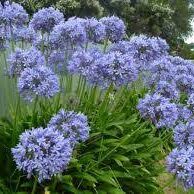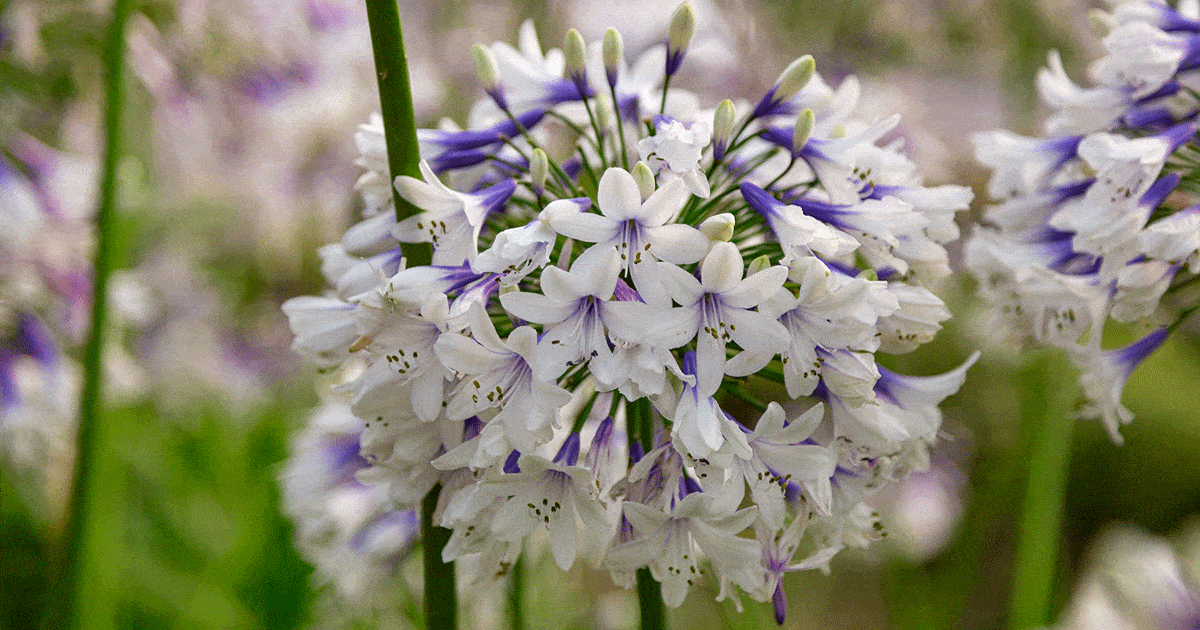Agapanthus Treatment Tips for Lush and Vibrant Flowers
Agapanthus Treatment Tips for Lush and Vibrant Flowers
Blog Article
Mastering the Art of Agapanthus Treatment: Essential Actions for Healthy Growth and Vivid Flowers
In the world of horticulture, the farming of agapanthus stands as a gratifying endeavor for those who look for to support these stylish flowering plants. With their striking blooms and graceful vegetation, agapanthus has actually caught the interest of gardeners worldwide. However, achieving optimal development and vibrant blooms calls for a nuanced strategy that incorporates various important actions. From choosing the best variety to understanding pruning strategies, the journey towards growing growing agapanthus plants is multifaceted and holds the crucial to unlocking the complete potential of these herb gems.

Picking the Right Agapanthus Range

When picking the ideal Agapanthus range for your garden, think about variables such as climate viability, bloom shade, and growth habit. Furthermore, think about the environment in your area to make sure the Agapanthus range you select can thrive in your certain problems. Understanding the development habit of different Agapanthus selections is essential for correct placement within your garden.
Perfect Planting Problems
Considering the optimum environmental needs is necessary for effective Agapanthus cultivation. Agapanthus plants are sensitive to cold temperature levels and need to be secured from frost during winter months.
To ensure healthy and balanced growth and dynamic blooms, plant Agapanthus bulbs at a deepness of regarding 2-4 inches and room them 8-12 inches apart. Adding raw material, such as garden compost, to the soil can boost drainage and fertility, advertising robust origin growth. Mulching around the base of the plants assists preserve dampness and subdues weed growth. Routine watering is critical, specifically during the expanding season, to keep the dirt regularly damp but not soaked.
Watering and Fertilizing Tips
Keeping appropriate dampness degrees and offering important nutrients are vital elements in the care program for Agapanthus plants. When it comes to watering Agapanthus, it is vital to strike a balance. These plants prefer continually wet soil however are at risk to root rot if overwatered.
Fertilizing Agapanthus is necessary for advertising healthy and balanced development and respected blooms. Use a well balanced fertilizer, such as a 10-10-10 formula, in the early springtime as new development arises. By adhering to these watering and feeding pointers, you can guarantee your Agapanthus plants grow and create dynamic, resilient flowers.
Trimming Strategies for Agapanthus
Trimming Agapanthus plants at the proper times and with appropriate techniques is vital for preserving their health and promoting optimal growth and flowering. The optimal time to prune Agapanthus is in late winter months or early springtime before brand-new development emerges.
For flowered stems, wait until the flowers have actually perished and then trim them back to the base. This not only tidies up the plant's appearance yet additionally encourages the growth of new flower buds. Deadheading invested blossoms can also reroute the plant's power right into generating even more blooms instead than establishing seeds. Nevertheless, if you intend to accumulate seeds for proliferation, leave some flowers to mature and completely dry on the plant.
Bear in mind to make use of clean, sharp devices to make accurate cuts and lower the threat of introducing illness. Agapanthus. Routine pruning will certainly aid keep your Agapanthus looking neat and healthy and balanced while making certain an abundant display of lovely blossoms
Taking Care Of Common Pests and Diseases
After guaranteeing correct pruning methods for Agapanthus, it is crucial to attend to common parasites and conditions that can influence the health and vitality of these plants. Agapanthus plants are generally durable yet Web Site can still come down with specific issues. One common insect that impacts Agapanthus is the Agapanthus gall midge. This little, orange fly lays its eggs in the vegetation, resulting in distorted development and flower buds that stop working to open up. To fight this bug, trim and damage any afflicted plant components and consider using insecticidal soap.
Furthermore, Agapanthus plants can suffer from root rot if they are planted in poorly draining pipes soil. By being cautious and taking punctual action against pests and diseases, you can assist your Agapanthus plants flourish and generate dynamic flowers. Agapanthus.

Conclusion
To conclude, understanding the art of click here for more info agapanthus treatment involves selecting the right variety, giving ideal growing problems, proper watering and feeding, proper pruning methods, and addressing usual parasites and illness. By adhering to these vital steps, you can guarantee healthy development and vibrant blooms for your agapanthus plants. Remember to routinely monitor Agapanthus and keep your plants to advertise their overall well-being and longevity.
To guarantee healthy development and vibrant blossoms, plant Agapanthus light bulbs at a deepness of regarding 2-4 inches and space them 8-12 inches apart. By following these watering and feeding tips, you can ensure your Agapanthus plants grow and generate lively, lasting flowers.
One typical pest that impacts Agapanthus is the Agapanthus gall midge. In addition, Agapanthus plants can experience from origin rot if they are grown in inadequately draining pipes dirt. By complying with these vital actions, you can ensure healthy and balanced development and vibrant blossoms for your agapanthus plants.
Report this page